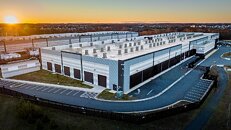Amazon Web Services (AWS) and OpenAI have signed a $38 billion deal spanning several years, seven to be more precise, to boost OpenAI’s AI operations using AWS’s high-end cloud setup. This agreement lets OpenAI use clusters with hundreds of thousands of NVIDIA GB200 and GB300 GPUs, the complete planned capacity is expected to be deployed for use by the end of 2026. These GPUs are set up across Amazon EC2 UltraServers linked by a fast, high-capacity network built to handle both inference and large-scale model training. AWS’s previous experience managing clusters exceeding 500,000 chips has been a key factor in OpenAI’s decision.
The new infrastructure is expected to serve a range of OpenAI applications, from ChatGPT inference workloads to training next-generation foundation mod…
Amazon Web Services (AWS) and OpenAI have signed a $38 billion deal spanning several years, seven to be more precise, to boost OpenAI’s AI operations using AWS’s high-end cloud setup. This agreement lets OpenAI use clusters with hundreds of thousands of NVIDIA GB200 and GB300 GPUs, the complete planned capacity is expected to be deployed for use by the end of 2026. These GPUs are set up across Amazon EC2 UltraServers linked by a fast, high-capacity network built to handle both inference and large-scale model training. AWS’s previous experience managing clusters exceeding 500,000 chips has been a key factor in OpenAI’s decision.
The new infrastructure is expected to serve a range of OpenAI applications, from ChatGPT inference workloads to training next-generation foundation models. OpenAI’s move to AWS comes after a series of recent partnerships with NVIDIA, AMD, Microsoft, Broadcom, and Oracle making sure they can tap into a mix of high-end chips and cloud systems. OpenAI CEO Sam Altman stated that the company plans to invest $1.4 trillion to build 30 gigawatts of computing capacity, equivalent to the power consumption of roughly 25 million U.S. households. So far, OpenAI has partnered with NVIDIA for 10 GW, AMD for 6 GW, and Oracle for 4.5 GW of compute capacity, moving steadily toward its stated goal of building a 30 GW AI infrastructure network.


